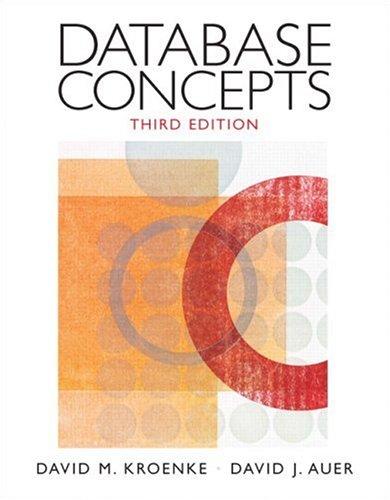Question
USE PYTHON3; DO NOT IMPORT ANY PACKAGES Recall the order of common time complexities: O(1) - constant time O(log n) - logarithmic time O(n) -
USE PYTHON3; DO NOT IMPORT ANY PACKAGES
Recall the order of common time complexities:
-
O(1) - constant time
-
O(log n) - logarithmic time
-
O(n) - linear time
-
O(n log n) - linearithmic time
-
O(n^2) - quadratic time
-
O(n^3), O(n^4), etc. - polynomial time
-
O(2^n), O(3^n), etc. - exponential time
Read the source code(below) of 10 python functions, and judge the time complexity of them. Write your answer (as the order 1 - 7) in the complexity_mc() function, which returns your answers as a list of 10 integers. In this list, write your answer to the first function at index 0, second function at index 1, etc.
For each function, if its parameter is n, you can assume it's a non-negative and large integer; if its parameter is a list (lst), you can assume n is the length of this list.
def complexity_mc():
"""
>>> answers = complexity_mc()
>>> isinstance(answers, list)
True
>>> len(answers)
10
>>> all([isinstance(ans, int) and 1 <= ans <= 7
... for ans in answers])
True
"""
# YOUR CODE GOES HERE #
return [...]
SOURCE CODES
# Q01
def q2_01(n):
dictionary = {}
for num in range(0, 100):
if num < n:
dictionary[num] = n - num
# Q02
def q2_02(n):
result = 0
for i in range(300):
result += (3 ** n)
for j in range(n * n * n * n):
result += 2
for k in range(0, 300 * n, 3):
result += 600 * k
return result
# Q03
def q2_03(n):
i = n
for j in range(2 * n):
while i > 1:
i = i // 2
i = n
# Q04
def q2_04(lst):
min_val = lst[0]
for val in lst:
if val < min_val:
min_val = val
return min_val
# Q05
def q2_05(n):
values = []
for i in range(0, n, 1):
for j in range(n, i, -1):
values.append(i + j)
return values
# Q06
def q2_06(n):
while n >= 1:
n = n // 3
for i in range(n * n):
print("Hello")
# Q07
def q2_07(lst):
for i in range(len(lst)):
min_idx = i
for j in range(i + 1, len(lst)):
if lst[j] < lst[min_idx]:
min_idx = j
temp = lst[i]
lst[i] = lst[min_idx]
lst[min_idx] = temp
# Q08
def q2_08(n):
p = n
q = 1
while p >= 1:
print("outer")
while q <= n:
q = q + 1
print("inner")
p = p // 2
print("finished")
# Q09
def q2_09(lst):
for item1 in lst:
for item2 in lst[::-1]:
for i in range(len(lst)+10, len(lst)-10, -1):
print(str(item1) + str(item2) + str(i))
# Q10
def q2_10(n):
def q2_10_helper(n, k):
m = 1
for i in range(n):
print("in helper")
m = m * k
return m
result = 0
for p in range(q2_10_helper(n, 2)):
result = result + p
for q in range(q2_10_helper(n, 3)):
result = result - q
return result
Step by Step Solution
There are 3 Steps involved in it
Step: 1

Get Instant Access to Expert-Tailored Solutions
See step-by-step solutions with expert insights and AI powered tools for academic success
Step: 2

Step: 3

Ace Your Homework with AI
Get the answers you need in no time with our AI-driven, step-by-step assistance
Get Started


